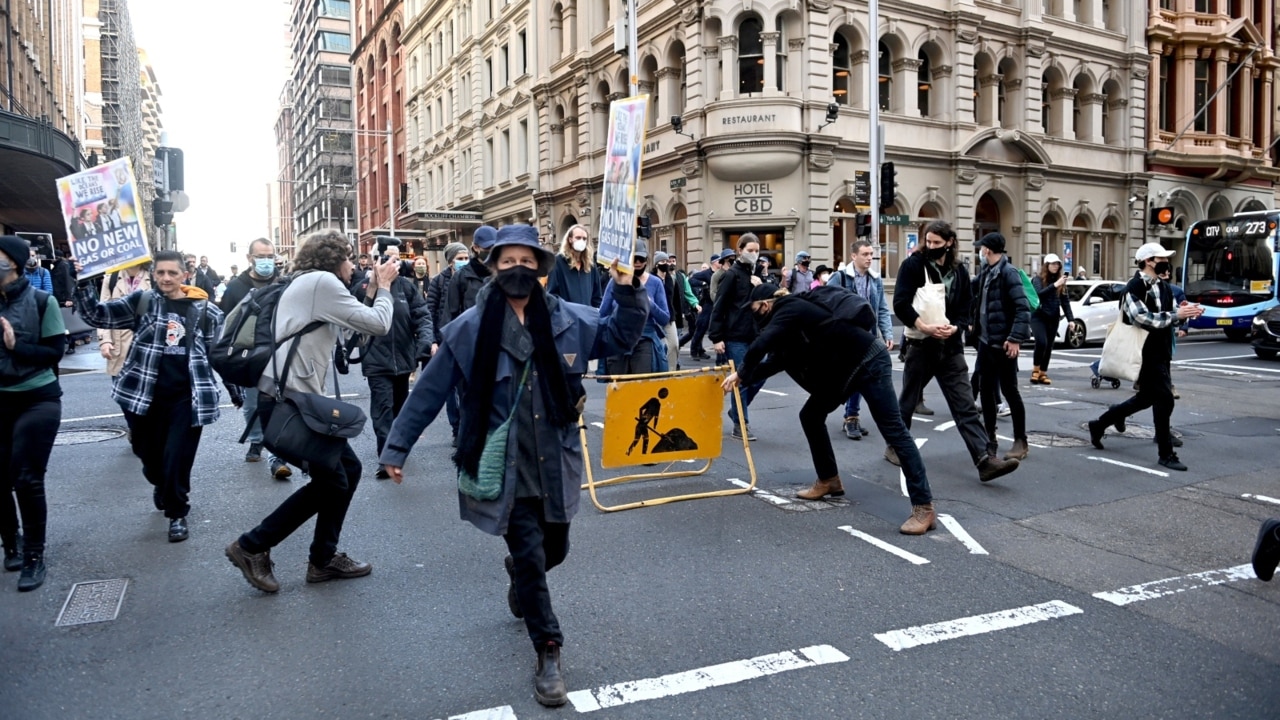
The militancy of climate activists is on the rise. It has two main causes. Climate change reformers from the UN to the Australian Greens have framed the concept in activist terms so followers believe they are outsiders working against national governments. Second, the apocalyptic rhetoric of climate justice encourages a vigilante mindset among more messianic activists who feel their purpose is to save the planet by whatever means necessary. Neither belief is conducive to change by democratic means.
Blockade Australia represents an anti-democratic tendency in left politics that thrives where radicalism is strong and justice is weak. Like 20th century anarchists, militant green groups believe property destruction is a legitimate form of protest. Their radicalism is emboldened by politicians who promote the use of unconventional or undemocratic methods to promote a cause.
Queensland Greens councillor Jonathan Sri argues blockades are an effective form of protest. In his blog, Can Roadblocks help Change the Political Climate?, Sri explains that unlike traditional forms of protest such as sit-ins, they are harder to ignore. “Lots of people are going to talk about it … so the media is essentially forced to cover it, whether they want to or not,” he writes. Sri notes disruptive tactics bring pressure to bear on politicians who might publicly dismiss fringe activists but “simultaneously seek to appease and build stronger relationships with the … groups whose petitions they previously ignored”.
The radicalism of climate protesters should be assuaged by the election of left-wing governments, which generally are viewed as more sympathetic to climate change activism. Yet support for more militant forms of protest continues. The New Yorker featured a podcast with activist Andreas Malm, who advocates property violence. Malm argued: “I do think we need to step up because so little has changed and so many investments are still being poured into new fossil fuel projects … So I am in favour of destroying machines, property – not harming people, that’s a very, very important distinction there.” It is also a false distinction. Destroying property in militant protests causes significant harm to people, from interfering with their right to earn a living and keep what they earn, to preventing access to essential services and terrorising them psychologically.

Many climate activists care little about what harm, stress or distress their actions cause to others. In the weeks leading up to Blockade Australia’s protests, police sought to disrupt their activities. Acting Assistant Commissioner Paul Dunstan said police “feared for their lives” during one incident where officers allege activists attacked them and slashed the tyres on their car. Dunstan said the operations were conducted because police believed BA was planning “extreme forms of protest”.
The Greens have condemned police targeting climate activists in recent weeks. Greens justice spokeswoman, NSW upper house MP Sue Higginson, said the operations demonstrated “how far down the road we are towards a police state”. The Human Rights Law Centre criticised police and described new laws against disruptive protests in NSW as “part of a concerning trend nationwide of bipartisan support for regressive legislation that further criminalises peaceful community activists”. The thousands of people prevented from going about their daily business last week thanks to Blockade Australia might be less inclined to view their activities as peaceful or community-minded. NSW Transport Minister David Elliott estimated they have cost the state millions.


For taxpayers facing a bleak winter of rising interest rates and punishing power bills, the costs of climate activism are hitting home. While many want action on climate change, the price cannot be punitive. Labor plans to legislate a 43 per cent cut in emissions by 2030 and net zero by 2050 as part of the climate bill it will table in parliament this month. Some teal independents want a 60 per cent reduction by 2030 and the Greens are lobbying for 75 per cent. But the cost would be prohibitive. Labor’s more modest targets will still require significant, systemic reform, including a $20bn energy infrastructure upgrade. The Australian Energy Market Operator said the nation will lose 60 per cent of its coal generation by 2030 while electricity consumption from the grid will double by 2050.
Labor’s election pledge to reduce power bills by $275 a year by 2025 might be revised downward, but its ambition to implement climate change plans is riding high. Minister for Climate Change and Energy Chris Bowen spent a sizeable portion of his National Press Club address last week serving humble pie to the opposition. Conservatives, he said, had engaged in fear campaigns about the cost of climate action. By contrast, Labor has no such fears. Its climate agenda is “ambitious”. In an inflationary environment, however, it is wise to temper idealism.
For some time, radical climate activists have been dismissed as hysterics who are better ignored. However, the growing militancy should be taken seriously. On the fringes of the green movement is a sizeable number of individuals who are anarchist by faith and unmoved by the rules of engagement that make society civil. The apocalyptic polemic of climate change leaders drives activists to lose faith in democracy and take ever more extreme actions to prevent what they believe is imminent doom. The main parties can provide an alternative view of the future that inspires democratic renewal by grounding climate policy in reality and making conservation projects more accessible to people from all walks of life.





